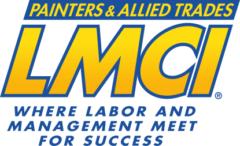News
Toolbox Talks Available from LMCI and CPWR
The Painters and Allied Trades LMCI is partnering with the Center for Construction Research and Training, CPWR, to bring the latest safety tools and news to the many construction sites members of the International Union of Painters and Allied Trades work on across the United States and Canada.
Toolbox Talks are an effective safety measure that don’t require a lot of time on the job site, but can make a world of difference when it comes to keeping safety top of mind for the workers on site.

Download over 40 ready to print Toolbox Talk handouts here that cover a variety of safety issues produced by CPWR: Pages 1-11, Pages 12-22, Pages 23-33, Pages 34-44.
Also take a look at tips below from Safestart.com on how to give effective Toolbox Talks:
- Talk directly to your audience. Ensure the topic is relevant to your industry and worksite. You can also focus on their personal agenda—staying safe so they can attend their kid’s soccer game after work, participate in off-the-job hobbies and continue providing for their families. Make sure the talk matters to employees both on and off the job. If workers don’t feel the topic applies directly to them you will have a hard time keeping their interest.
- Keep it brief. People have limited attention spans and they’ll eventually start tuning you out no matter how important the topic of your toolbox talk is. Make only the necessary points, and put additional information in a handout or a follow-up toolbox talk on a later day.
- Stay positive! Incident investigations are a reactive approach to something negative happening—and toolbox talks can be the exact opposite. They’re an opportunity to proactively encourage safe behavior before an incident takes place. Keep the focus on what can be done to create a safe workplace instead of focusing on what has gone wrong in the past.
- Demonstrate your point. Nobody wants to feel like they’re at a lecture so try to make your talk interactive – when the audience is involved they are more likely to pay attention. Demonstrations, discussions and hands-on examples are all effective ways to get people to participate—and it will help them retain more of the information too.
- Tell a story, not a statistic. People believe stats but they remember stories. Statistics are a great way to get a point across but the best way to convey a point is to tell a story. Storytelling is a powerful method of conveying information and helping listeners identify with it and keep it top of mind—which is the goal of a toolbox talk. But don’t forget that stories should follow the other guidelines above, so keep them brief, relevant and make sure they clearly demonstrate your point.
